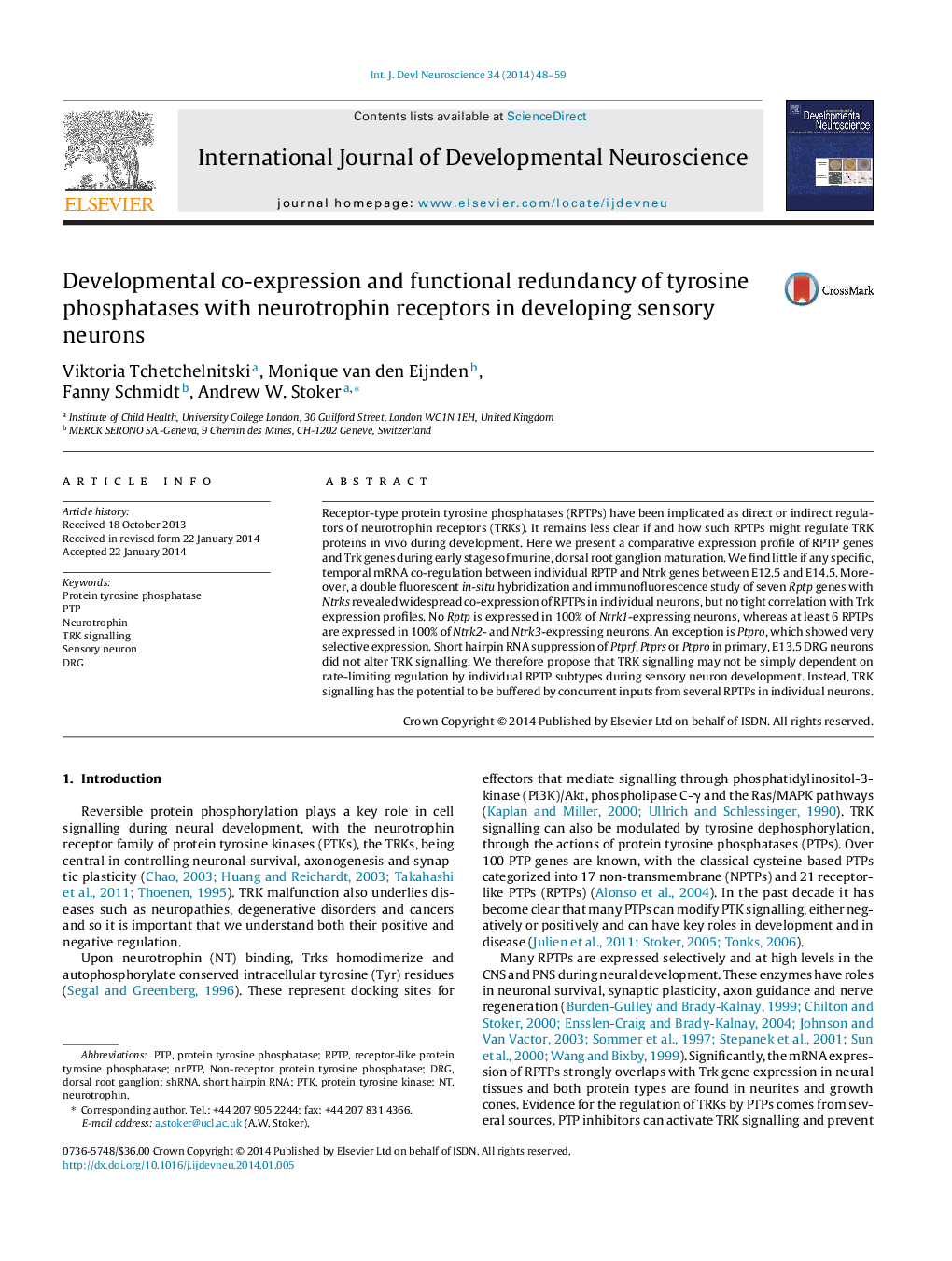| Article ID | Journal | Published Year | Pages | File Type |
|---|---|---|---|---|
| 2785942 | International Journal of Developmental Neuroscience | 2014 | 12 Pages |
•Co-expression of Trk and tyrosine phosphatase genes is investigated in embryo DRGs.•Majority of PTP genes are widely expressed in embryo sensory neurons.•PTP and Trk gene expression patterns overlap but do not spatially align.•Suppression of single receptor PTP mRNAs in culture does not deregulate TRK signals.•TRK regulation in sensory neurons likely involves redundant combinations of PTPs.
Receptor-type protein tyrosine phosphatases (RPTPs) have been implicated as direct or indirect regulators of neurotrophin receptors (TRKs). It remains less clear if and how such RPTPs might regulate TRK proteins in vivo during development. Here we present a comparative expression profile of RPTP genes and Trk genes during early stages of murine, dorsal root ganglion maturation. We find little if any specific, temporal mRNA co-regulation between individual RPTP and Ntrk genes between E12.5 and E14.5. Moreover, a double fluorescent in-situ hybridization and immunofluorescence study of seven Rptp genes with Ntrks revealed widespread co-expression of RPTPs in individual neurons, but no tight correlation with Trk expression profiles. No Rptp is expressed in 100% of Ntrk1-expressing neurons, whereas at least 6 RPTPs are expressed in 100% of Ntrk2- and Ntrk3-expressing neurons. An exception is Ptpro, which showed very selective expression. Short hairpin RNA suppression of Ptprf, Ptprs or Ptpro in primary, E13.5 DRG neurons did not alter TRK signalling. We therefore propose that TRK signalling may not be simply dependent on rate-limiting regulation by individual RPTP subtypes during sensory neuron development. Instead, TRK signalling has the potential to be buffered by concurrent inputs from several RPTPs in individual neurons.
